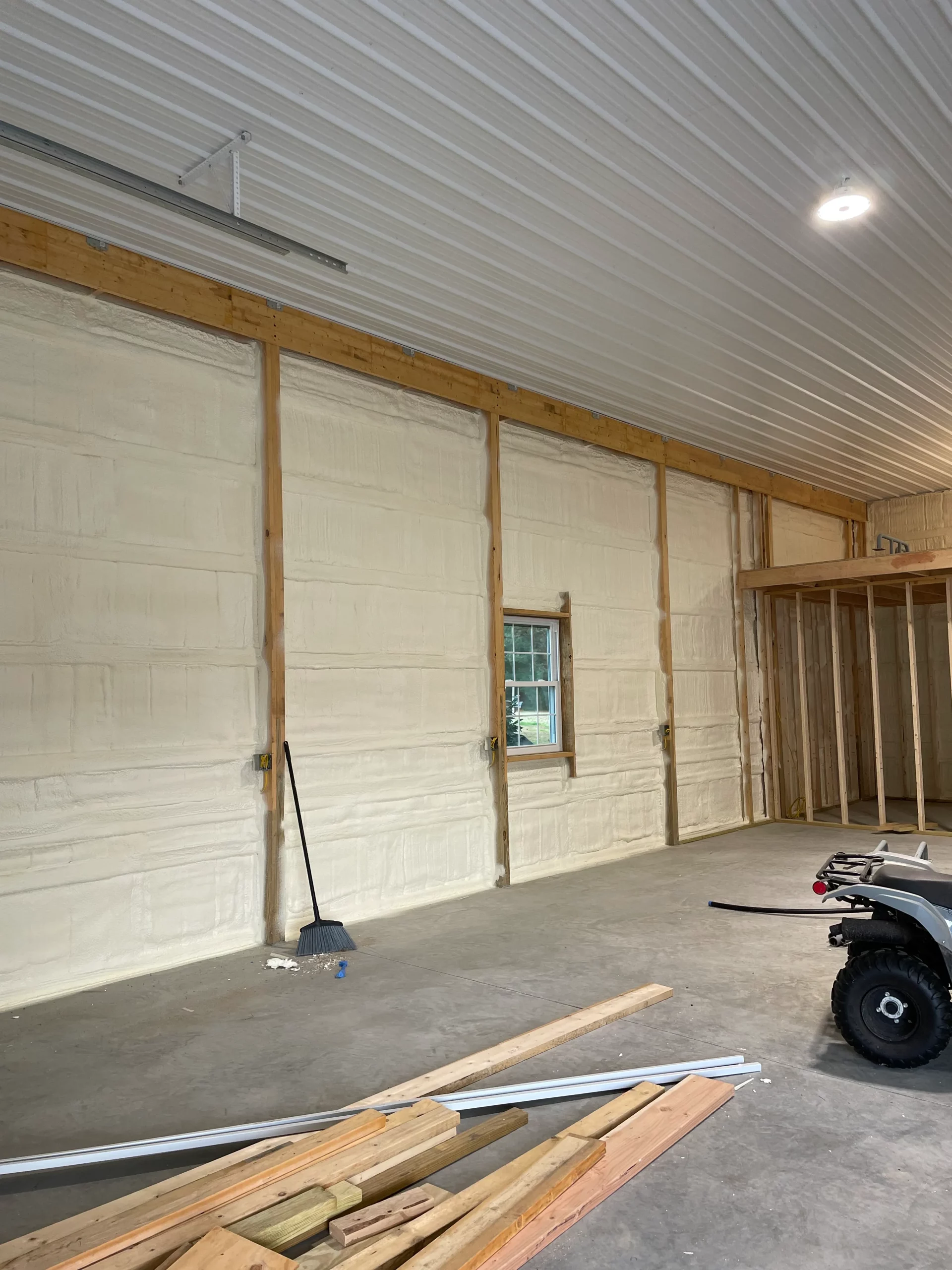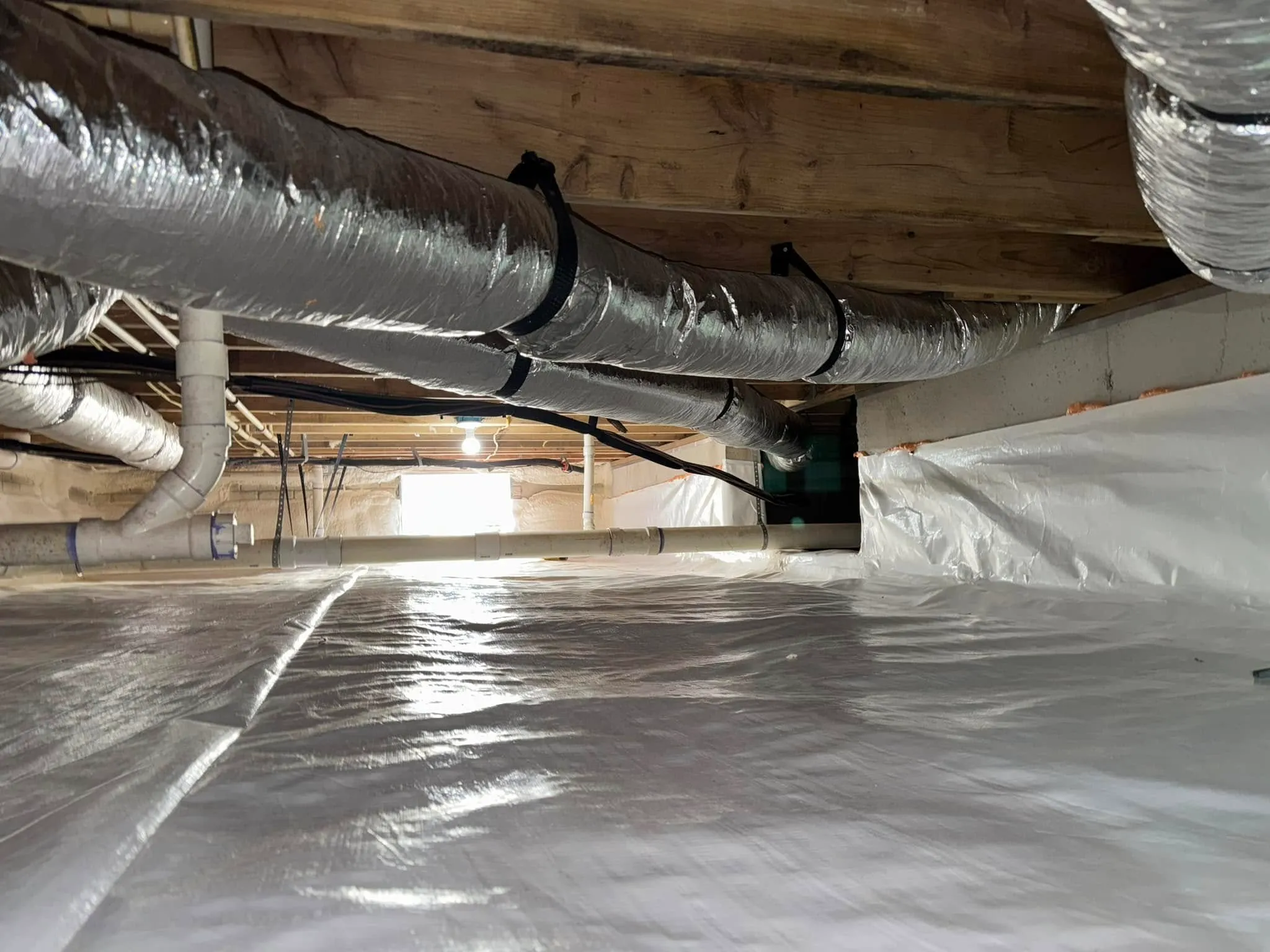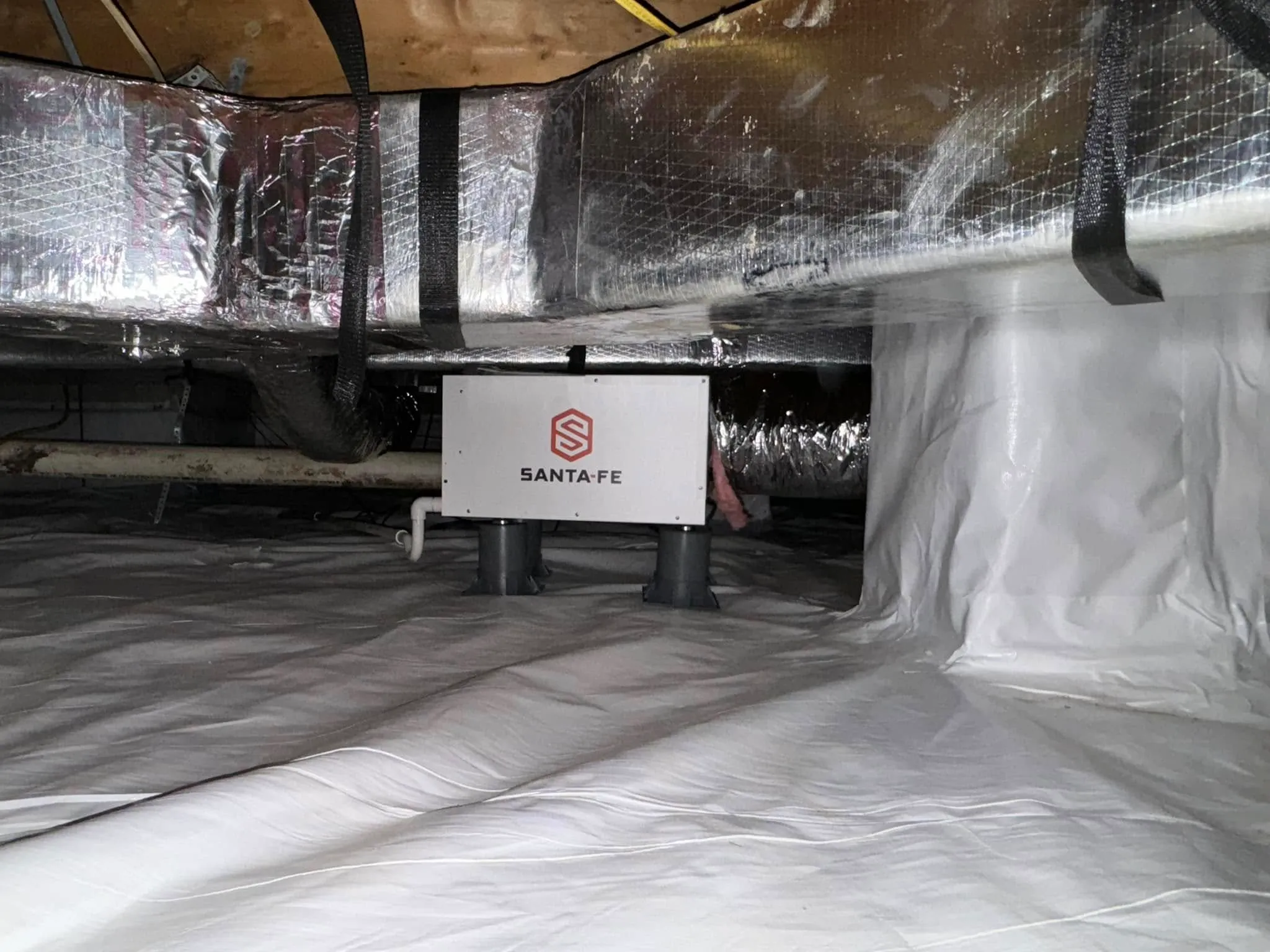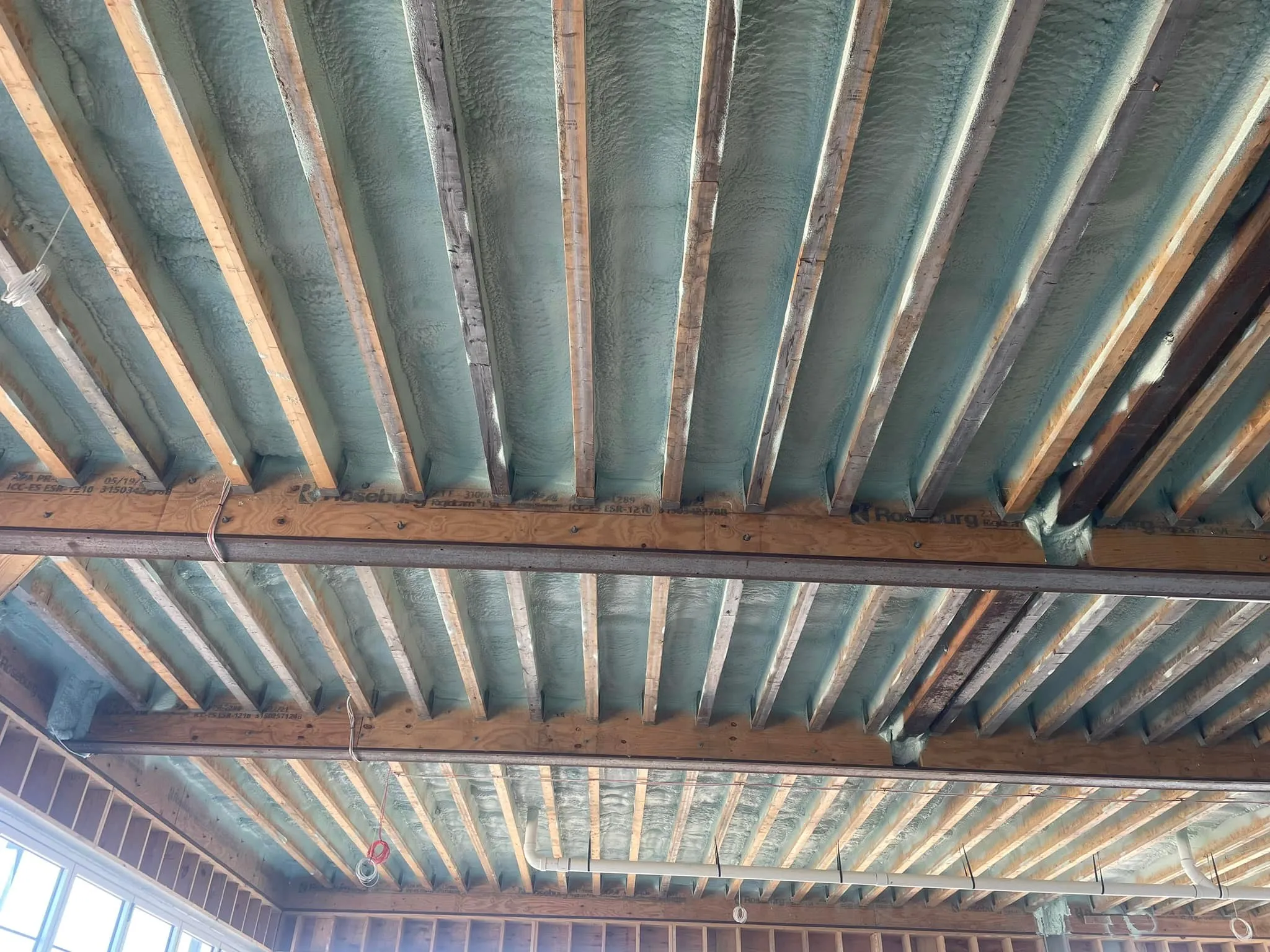

Crawlspace air does impact indoor air quality. Up to 50% of the air inside a home can originate from the crawlspace, especially in properties with poor insulation or high humidity levels. Contaminants like mold spores, radon, dust, and volatile organic compounds (VOCs) can infiltrate living areas through the stack effect, where warm air rises and pulls air from lower levels into the home.
Homes in humid regions like Maryland and the Mid-Atlantic often face higher crawlspace moisture levels, making effective insulation and sealing more critical. Controlling crawlspace conditions directly reduces the introduction of airborne pollutants indoors.
| Treatment Type | Air Quality Impact | Moisture Control | Energy Efficiency | Installation Scope |
|---|---|---|---|---|
| Vapor Barrier Only | Low | Moderate | Low | Partial, floors only |
| Fiberglass Insulation | Low | Low | Moderate | Often sags or absorbs moisture |
| Open Cell Spray Foam | High | Moderate | High | Expands to seal leaks |
| Closed Cell Spray Foam | Very High | High | Very High | Acts as moisture and air barrier |
| Full Encapsulation (Liner + Foam + Seal) | Maximum | Maximum | Maximum | Comprehensive enclosure |
| Factor | Description | Recommended Specification |
|---|---|---|
| Relative Humidity (RH) | Key driver for mold growth | Maintain RH below 60% |
| Ventilation Rate | Impacts contaminant dilution | 1 CFM per 50 sq ft (min) |
| Thermal Conductivity | Determines insulation effectiveness | < 0.03 W/m·K for spray foam |
| Permeability (perm rating) | Indicates vapor resistance | < 1 perm for closed cell insulation |
| Air Leakage Rate | Impacts pollutant transfer | < 3.0 ACH50 in sealed systems |
In Maryland, humid summers and cool winters create conditions conducive to condensation and mold growth in unsealed crawlspaces. Seasonal shifts increase the migration of air and moisture between crawlspaces and upper floors. Closed cell spray foam and encapsulation remain highly effective in these conditions by sealing out moisture and stabilizing internal temperatures.
Bonus Tip: Use a hygrometer in crawlspaces to monitor humidity levels year-round.

Vented crawlspaces allow moisture and outdoor air to circulate inside.
Fiberglass often fails in damp conditions.
This indicates elevated moisture and possible biological contamination.
If yes, sealing and insulation are more critical.
Bonus Tip: Use thermal imaging to detect hidden cold spots and leaks in crawlspace insulation.
Crawlspace air plays a direct role in indoor air quality, especially in humid regions like Maryland. Moisture and contaminants in these areas transfer upward, impacting health and comfort. Sealing, insulating, and encapsulating the crawlspace are necessary steps for long-term control.
Use site-specific data, inspect existing conditions, and apply moisture control methods proven to work in your region.
Peninsula Insulation, LLC helps Maryland homeowners manage crawlspace air quality through insulation, air sealing, and full encapsulation systems. For questions or assessments, contact wil@mdsprayfoam.net or call (410) 770-2624.
During seasonal transitions spring and fall when temperature and humidity changes amplify the stack effect.
No. It reduces ground moisture but does not stop airflow or seal contaminants.
Yes. It stabilizes floor temperatures and reduces drafts, which also helps HVAC systems work more efficiently.
Inspect annually, or after significant weather events.
Check for tears in the liner, confirm humidity stays below 60%, and monitor for pest entry.
No. Spray foam is inert and doesn’t provide food or nesting material.
Yes. Tests for VOCs, mold, and particulates can show whether crawlspace air is affecting the interior.
In high humidity zones, yes. They maintain low moisture even in well-sealed crawlspaces.


